You’re hosting a dinner party, and as you’re setting the table, your friend casually mentions that their new plates are “vitrified porcelain.”
Your other guest chimes in about their sustainable bamboo dinnerware, while someone else swears by their grandmother’s bone China collection.
Suddenly, a simple choice between “fancy” and “everyday” plates becomes a fascinating exploration of materials, durability, and style.
Whether you’re a passionate home chef or someone who appreciates a well-set table, understanding the various types of dinner plate materials can transform your dining experience from ordinary to extraordinary.
But here’s the twist—the material you choose affects more than just aesthetics; it influences everything from the presentation of your food to your family’s health.
- THE ESSENTIAL GUIDE TO THE TYPES OF DINNER PLATE MATERIALS
- PORCELAIN: THE ELEGANT CLASSIC
- STONEWARE: THE RUSTIC CHARMER
- MELAMINE DINNERWARE
- BONE CHINA: THE LUXURY CHOICE
- CERAMIC: THE VERSATILE STANDARD
- WHEAT STRAW DINNERWARE
- BAMBOO DINNERWARE
- GLASS DINNERWARE
- STAINLESS STEEL DINNERWARE
- PLASTIC DINNERWARE MATERIAL
- WHAT IS THE BEST DINNERWARE MATERIAL?
- IMPORTANT FACTORS TO CONSIDER WHEN CHOOSING DINNERWARE
- FREQUENTLY ASKED QUESTIONS ABOUT DINNER PLATE MATERIALS
- CONCLUSION
THE ESSENTIAL GUIDE TO THE TYPES OF DINNER PLATE MATERIALS
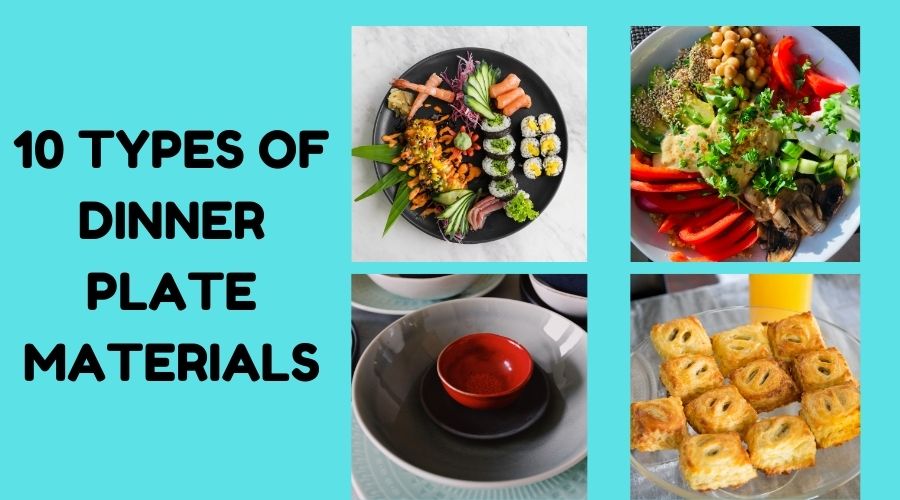
The various types of dinner plate materials common with every home are:
- Porcelain
- Ceramic
- Stoneware
- Melamine
- Bone China
- Wheat Straw
- Bamboo
- Glass
- Stainless Steel
- Plastic
PORCELAIN: THE ELEGANT CLASSIC
Think of porcelain plates as the tough, fancy dishes in your kitchen. They’re made by baking special clay at super-hot temperatures – hotter than a pizza oven!
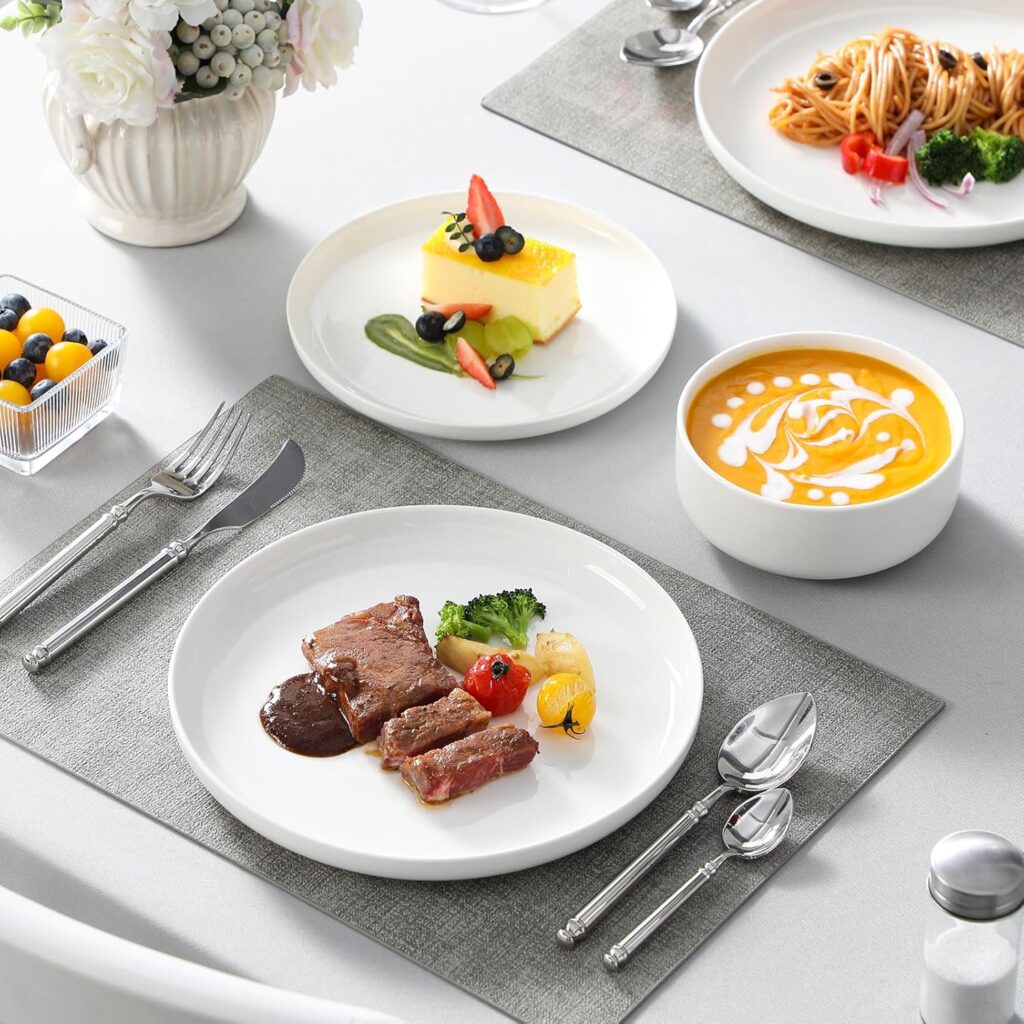
People often ask between porcelain and ceramic dinnerware which is better for home use? This we have answered in another guide.
Porcelain plates are special because they’re slightly see-through – hold one up to the light, and you might notice a faint glow, like when light passes through a thin white curtain.
They’re also really strong and hardly contain any toxic elements, so you don’t have to worry about chips when stacking them in the dishwasher.
Unlike regular plates, porcelain won’t hold onto food smells or stains, so your leftover curry won’t leave a mark.
You can find these plates in many styles, from plain white to ones with pretty patterns.
Key characteristics are:
– Non-porous surface resistant to staining
– Excellent heat retention
– Microwave and dishwasher safe
– Elegant translucent appearance.
STONEWARE: THE RUSTIC CHARMER
Stoneware dishes bring a rustic, handcrafted feel to your table. Made from thick clay and fired at high temperatures, these plates are like the heavyweight champions of the kitchen.
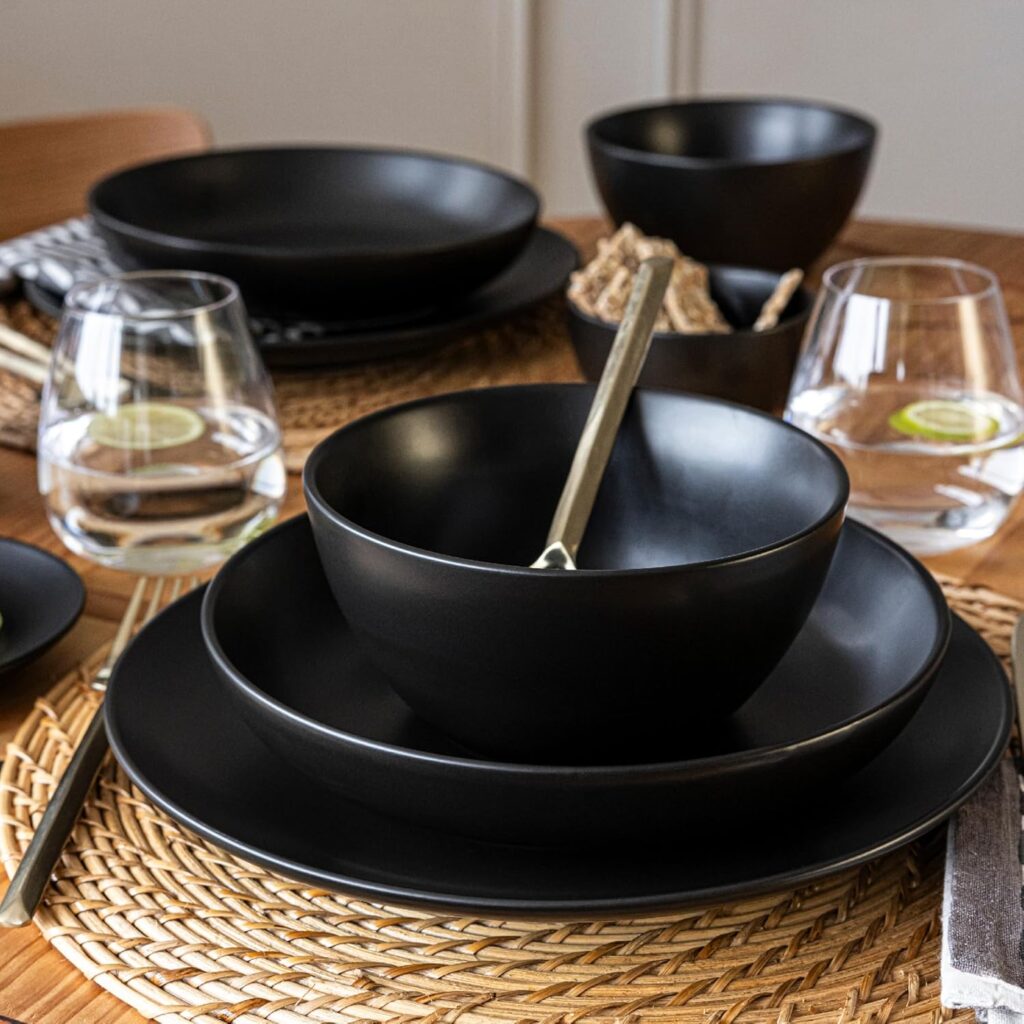
Think of them as the cozy sweater of dinnerware – they keep food warm longer and have a natural, earthy look.
While they’re heavier than other plates, stoneware resists scratches and can handle hot food straight from the oven.
Each piece often has unique speckles or subtle color variations, making your dinner set one-of-a-kind.
To know more about the Stoneware dinnerware material, read our guide on the disadvantages of stoneware and porcelain vs stoneware.
Key characteristics:
– Dense, opaque material fired at high temperatures (1,200°C to 1,400°C)
– Excellent heat retention properties
– Naturally non-stick surface that develops over time
– Distinctive rustic appearance with unique glazing options
– Highly resistant to scratching and chipping( depends heavily on your use and maintenance culture)
– Microwave, oven, and dishwasher safe
– More substantial weight compared to other materials.
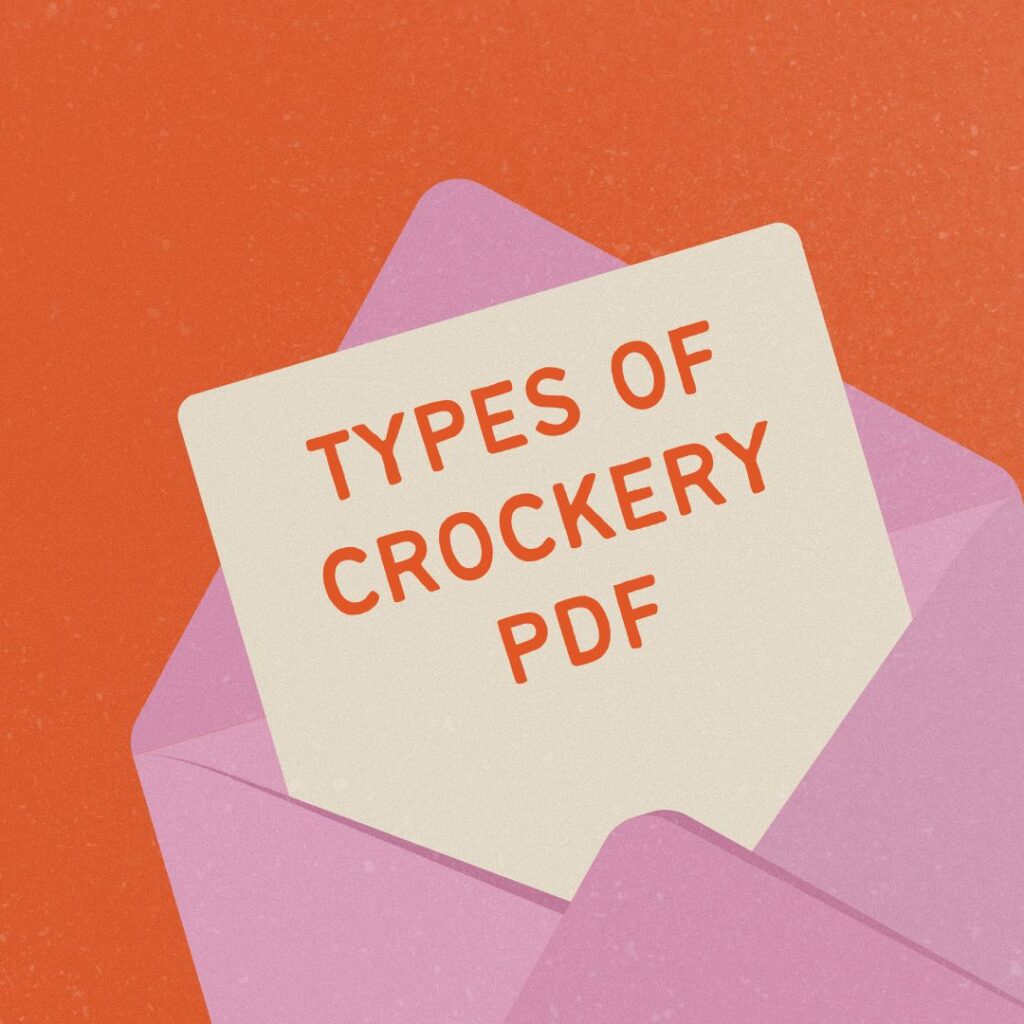
MELAMINE DINNERWARE
For casual dining and outdoor entertainment (camping and RV), melamine has revolutionized the market.
Melamine plates are like plastic’s tougher cousin – imagine if plastic and ceramic had a baby!
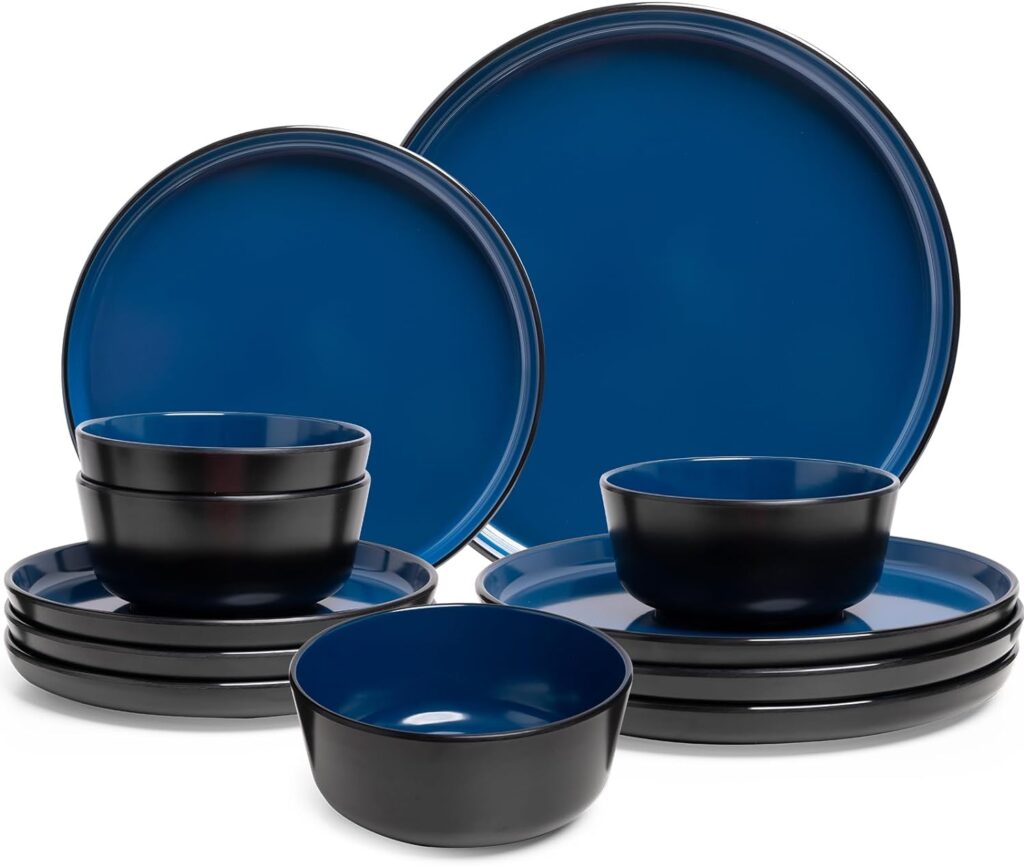
They’re super lightweight and nearly impossible to break when dropped, making them perfect for outdoor picnics and kids’ meals.
While they’re not microwave-safe (they can release harmful chemicals when heated), these dishes are dishwasher-friendly and come in fun, bright colors.
Think of them as the playground-tough dishes that can handle being tossed around but still look nice enough for family dinner.
To learn more about melamine, see our guide on the difference between stoneware and melamine dishes.
Some of its key characteristics are:
– Lightweight construction
– Virtually unbreakable design
– Kid-friendly safety features
– Affordable pricing.
BONE CHINA: THE LUXURY CHOICE
Bone China represents the pinnacle of formal dinnerware, commonly called China dishes.

Bone China dishes earned the name “Bone China” because of its constituents of bone ash which is about 30%, other brands might have a higher amount.
This is what has contributed to its remarkable strength and translucency. They are also dishwasher and microwave oven safe.
Key characteristics:
– Exceptional strength-to-weight ratio
– Superior chip resistance despite its delicate appearance
– Distinctive warm, creamy white colour
– The highest level of translucency among all dinnerware materials
– Fine, elegant rim detail
– Superior thermal conductivity
– Excellent resistance to thermal shock
– Premium pricing reflecting its quality and craftsmanship
CERAMIC: THE VERSATILE STANDARD
Ceramic plates are like the trusty old jeans of your kitchen.
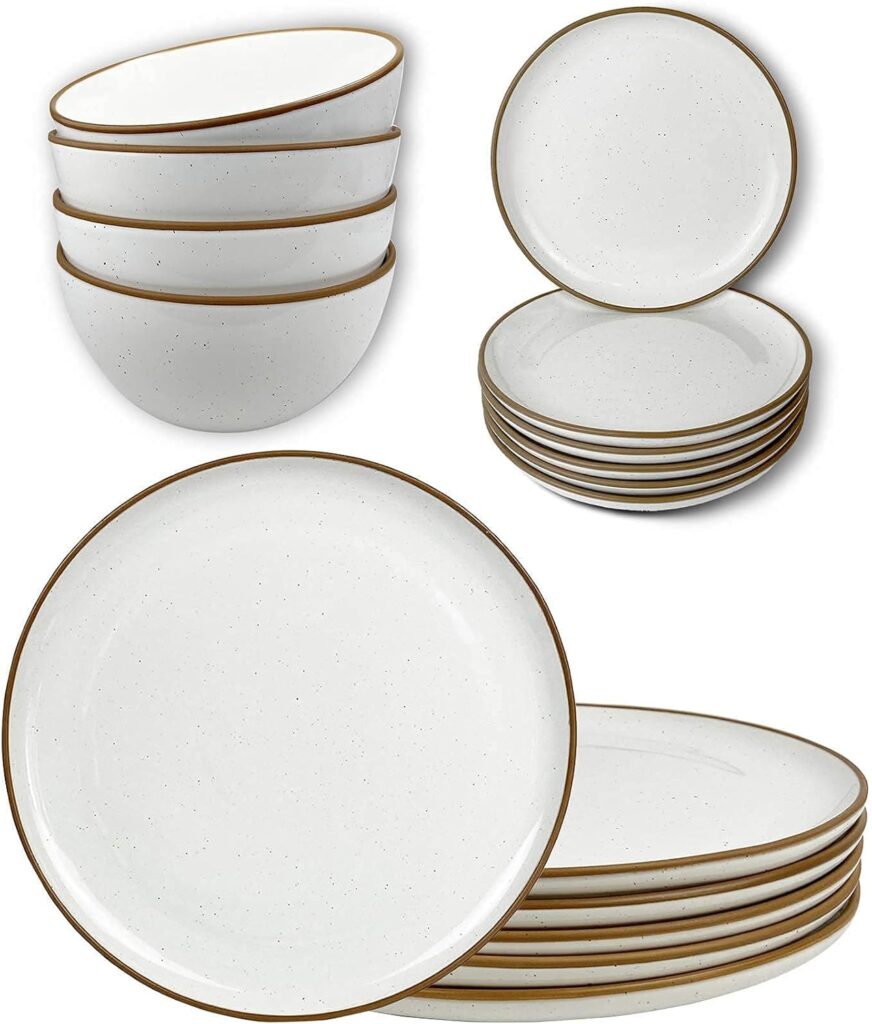
Made from clay baked at moderate temperatures, these dishes [one of the healthiest dinnerware materials] don’t contain any harsh chemicals and are safe for all your meals if properly manufactured and meet FDA standards.
They’re great for everyday use but can chip if dropped – like getting a small tear in your favorite shirt.
Available in countless colors and patterns, ceramic dishes are budget-friendly and keep food warm nicely. Just avoid sudden temperature changes to prevent cracking.
Key characteristics:
– Moderate heat retention
– Available in various price points
– Resistant to scratching and cutlery marks
– Generally microwave and dishwasher safe
– Can be either glazed or unglazed
– Suitable for both casual and formal dining.
WHEAT STRAW DINNERWARE
This innovative material represents a sustainable solution in modern dinnerware, made from agricultural by-products that would otherwise be waste.

Key characteristics of wheat straw dinnerware material include:
– Biodegradable and eco-friendly composition
– Lightweight yet durable construction
– Microwave safe up to specific temperatures
– Natural antibacterial properties
– Break-resistant design
– Ideal for both indoor and outdoor use
– Available in soft, natural colours
– Cost-effective pricing
– Free from BPA and other harmful chemicals
BAMBOO DINNERWARE
Bamboo plates have gained popularity among environmentally conscious consumers seeking sustainable alternatives to traditional materials.
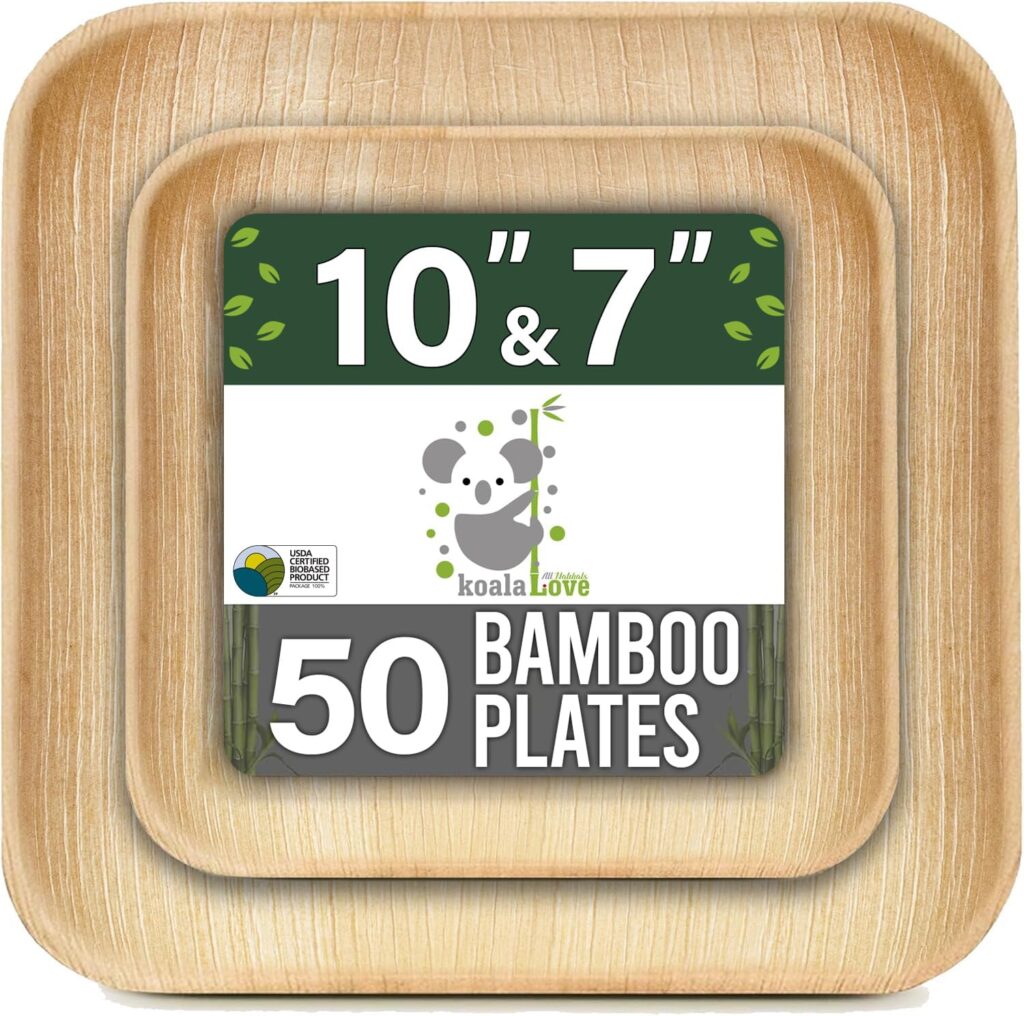
Key characteristics:
– Naturally renewable and sustainable resource
– Antibacterial and antimicrobial properties
– Lightweight and portable
– Biodegradable at end of life
– Resistant to water absorption
– Available in both natural and dyed finishes
– Ideal for casual dining and outdoor events
– Not suitable for microwave use
– Requires careful maintenance to maintain appearance
GLASS DINNERWARE
Glass plates are like see-through warriors in your kitchen! They’re completely non-toxic and won’t absorb food smells or stains.

Key feature: you can watch your food heat up in the microwave through them. While they can break if dropped, they’re surprisingly sturdy for daily use.
The best part? You can spot any missed spots while washing instantly, making them super easy to keep clean.
STAINLESS STEEL DINNERWARE
Think of stainless steel plates as the nearly indestructible tanks of your kitchen.

They’re practically unbreakable, won’t rust, and can handle any temperature without flinching.
Key feature: incredible durability. Perfect for outdoor dining and kids’ meals, they’ll likely outlast all your other plates.
The downside? They can’t go in the microwave, and they might show scratches over time. To know more about the best stainless steel brands, kindly read our guide on American-made stainless steel dishes.
PLASTIC DINNERWARE MATERIAL
These are like the casual, easy-going plates in your collection. Super lightweight and budget-friendly, plastic dishes are perfect for picnics and casual meals.
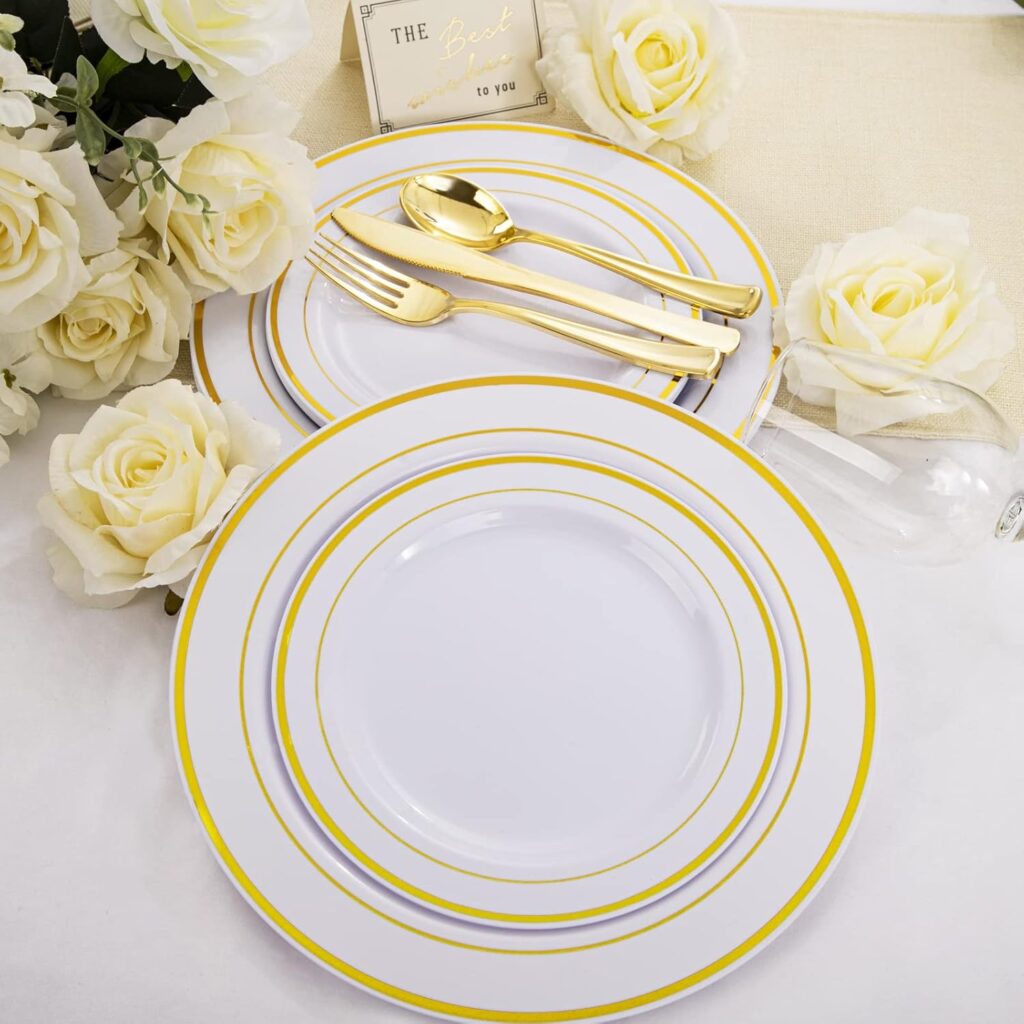
Key feature: extreme portability. While they’re not microwave-safe and can stain easily, they’re great for kids’ meals and outdoor events where breaking dishes would be a concern.
Just remember they can warp in high heat.
WHAT IS THE BEST DINNERWARE MATERIAL?
The ideal dinnerware material depends on your specific needs:
1. For Everyday Use:
Porcelain is often considered the best all-rounder because it offers:
– Superior durability
– Excellent heat retention
– Elegant appearance
– Versatility for all occasions
2. For Maximum Durability:
– Vitrified porcelain
– Bone china
– High-quality stoneware
3. For Casual Dining:
– Melamine
– Stoneware
– Ceramic
4. For Formal Settings:
– Bone china
– Fine porcelain
– Premium ceramic
5. For Eco-Conscious Users:
– Bamboo composites
– Wheat straw
– Recycled glass
Remember that the “best” material ultimately depends on your specific needs, lifestyle, and preferences.
Consider how you’ll primarily use the dinnerware, your maintenance habits, and your budget when making your selection.
IMPORTANT FACTORS TO CONSIDER WHEN CHOOSING DINNERWARE
– Intended use (daily vs special occasions)
– Care/ cleaning requirements
– Budget constraints
– Storage space
– Lifestyle needs
– Environmental impact
– Dishwasher and microwave compatibility
– Weight preferences
– Design preferences
– Typical meal types
FREQUENTLY ASKED QUESTIONS ABOUT DINNER PLATE MATERIALS
What is the most common material for plates?
Ceramic and porcelain are the most commonly used materials for plates worldwide, with ceramic being particularly prevalent in everyday households.
This widespread use is due to:
1. Accessibility and Cost:
– Widely available at various price points
– Good value for money
– Produced by many manufacturers
2. Practical Benefits:
– Durable enough for daily use
– Easy to clean and maintain
– Microwave and dishwasher safe
– Heat resistant
3. Versatility:
– Available in countless designs and styles
– Suitable for both casual and formal dining
– Works well with all types of cuisine
– Appropriate for hot and cold foods
What is the best plate material to eat food in?
High-quality porcelain and ceramic are generally considered the best materials for eating, based on several key factors:
1. Safety Features:
– Non-porous surface prevents bacterial growth
– No harmful chemical leaching
– Temperature stable
– Easy to sanitize properly
2. Practical Benefits:
– Excellent heat retention
– Resistant to staining
– Durable for daily use
– Easy maintenance
3. Culinary Advantages:
– Doesn’t affect food taste
– Suitable for all food types
– Good temperature regulation
– Elegant presentation
4. Long-term Value:
– Maintains appearance over time
– Resistant to wear and tear
– Cost-effective over time
– Versatile usage
What dinnerware material doesn’t or hardly scratches?
Several materials offer superior scratch resistance:
1. Vitrified Porcelain:
– Extremely hard surface
– Resistant to utensil marks
– Maintains glossy finish
– Difficult to damage with normal use
– Triple-layer strong glass construction
– Highly resistant to scratches
– Non-porous surface
– Exceptionally durable
3. High-quality Melamine:
– Scratch-resistant surface
– Durable synthetic material
– Perfect for casual dining
– Ideal for outdoor use
CONCLUSION
Your choice of dinner plate material reflects not just your style but your lifestyle.
Whether you’re drawn to the timeless elegance of porcelain, the durability of vitrelle glass or melamine, and the rustic charm of stoneware, understanding these materials helps you make an informed decision that enhances your dining experience.
Looking to upgrade your dinnerware? Consider starting with a versatile material that matches your primary usage needs, then perhaps expanding your collection to include specialty pieces for specific occasions.
Resources and Further Reading:
Ceramic Tableware – Manufacturing and Material Constituents